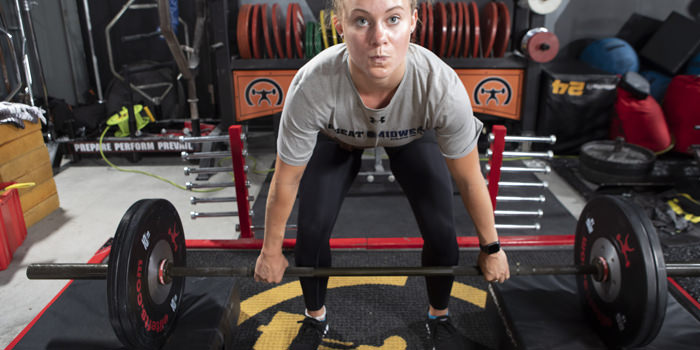
I never want to be that crusty old guy in the corner; talking about this is not how we did it back in the day, kids today, blah, blah, blah. I am all for new exercises, innovations in training, recovery, speed, you name it. However, there is a disturbing trend that I am seeing, especially in the past couple of years, that has me concerned.
The first one, and one of the most basic needs of developing ANY type of athlete, is the bend. It is bad enough that squatting just to parallel has seemed to go the way of the dinosaur, but in other lifts as well, this new phenomenon has seemed to take over.
No depth in lunges, bodyweight, or goblet squats? Mobility drills? Nope.
Long is Strong
The basis of building muscle can be summed up in three words: Long is Strong. If a muscle isn't worked through its entire range of motion, it will never develop to its fullest potential. If it is not developed to its fullest potential, the athlete will never develop to their fullest potential. Isn't that our job?
RECENT: Going Back to Where We Started
Why would we put our athletes at risk of tears or pulls because of a half-developed muscle?
How about the inability to reach speeds because of a weak link in the chain—one muscle that isn't trained to its maximal potential?
Take, for example, a long balloon used to make an animal at the circus. Blow it up halfway, so one half is full of air and the other is just a small squiggly piece of plastic. Now take the hamstrings. If you only work half of the muscle, like the balloon, where do you think it will tear when maximal force is applied? You got it. Where big meets little.
In almost every school that I visit or Instagram post I see, technique seemingly has gone out the window. The reasons are many; either coaches don't know how to teach technique correctly, they're not sure what a lift executed correctly looks like, they saw someone doing it somewhere on the Internet, or they just don't care.
I believe the only reason weight training is not a higher cause of injuries in the high school setting is because of the amazing resiliency of high school athletes. You could throw them off the roof, and they'd land and be ready to go for the next rep.
I don't know what happens in that summer between high school and college, but their bodies seem to age 30 years—they pull something tying their shoes.
I would love to hear any feedback on that phenomenon. Anyone that has coached in high school and college knows exactly what I am saying.
You can't get away with it as much in college for that reason, but that is why hex bar deadlifts are all the rage.
Don't want to make your athletes bend? Flip the hex bar over and have handles that go to the mid-thigh, so they only have to shrug down and grab it. Six inches of depth for a deadlift is not going to cut it.
Sport Coaches' One Complaint
On the flip side, when talking to sport coaches, the number one complaint I hear, no matter the sport, is the athlete's inability to bend! I have seen tryouts where the first thing they do is ask a kid to squat down and hold it for ten seconds. If they can't do that, they are sent home!
Do you see the problem here?
Coaches want one thing, and strength coaches are doing another. It is really an easy fix. Trust me, your athletes and coaches will thank you.
Full range of motion, and always remember B is for BEND!
Coach G has been a strength and conditioning coach at all levels of athletics for the past twenty years. After beginning his career as a strength coach at the high school level and winning four state championship titles, he became a head football strength coach at the Division I-AA level. Following a successful ten-win season, he moved on to the SEC as an assistant strength coach, working with football and other various sports for four years. Coach G then moved on and has been a director of strength and conditioning at the Division I level ever since. He has coached in numerous bowl games, playoffs, and conference championships.










